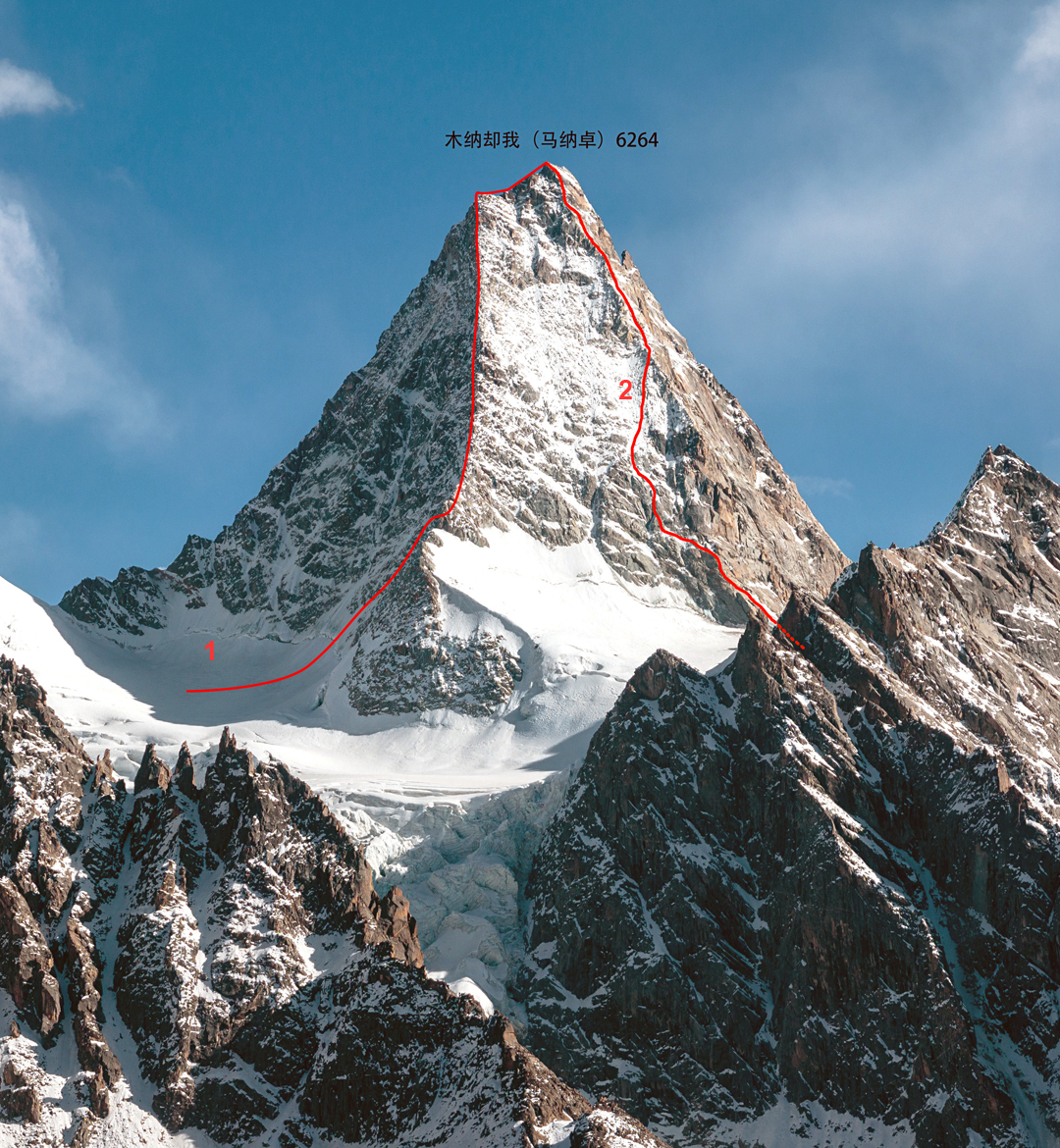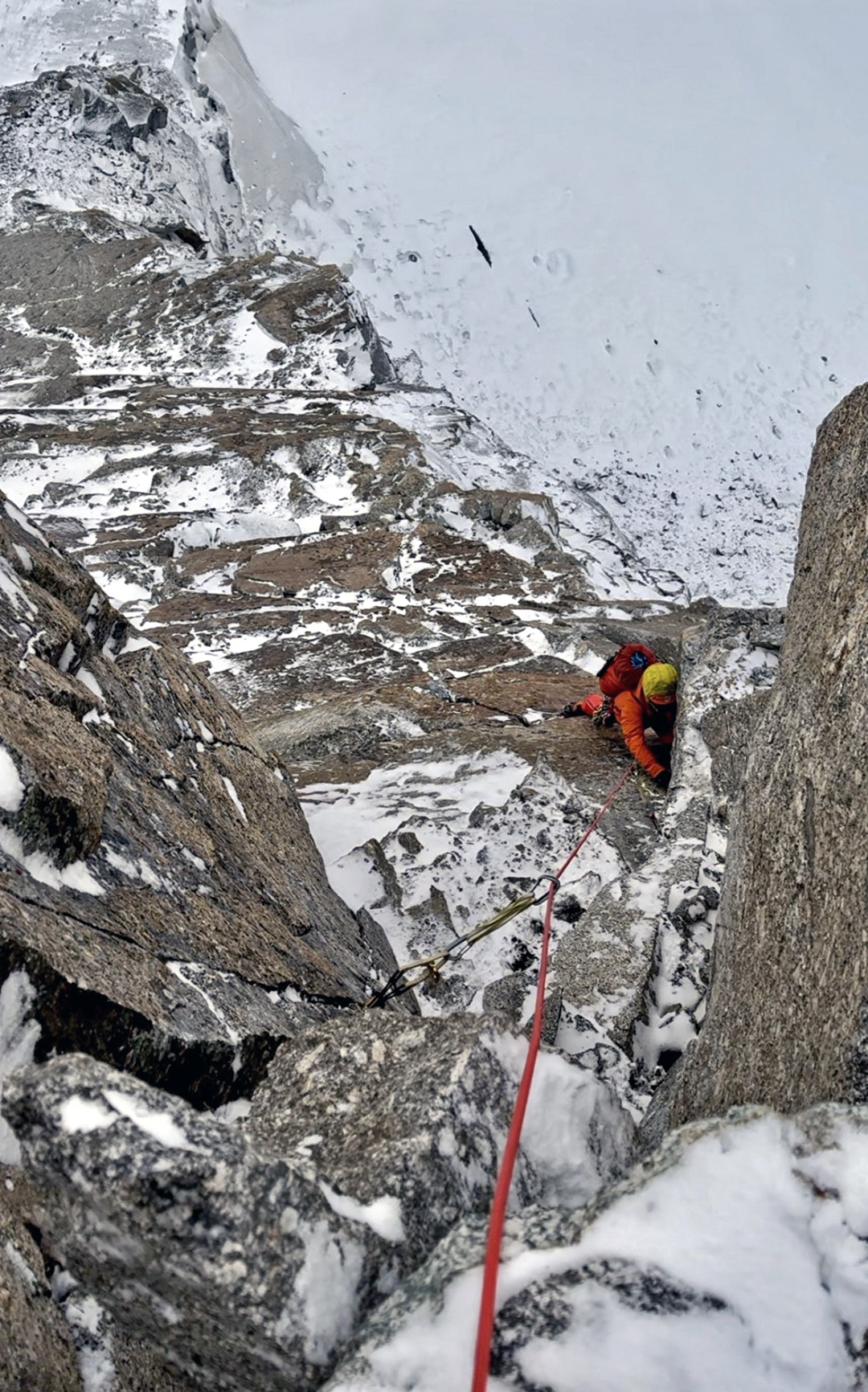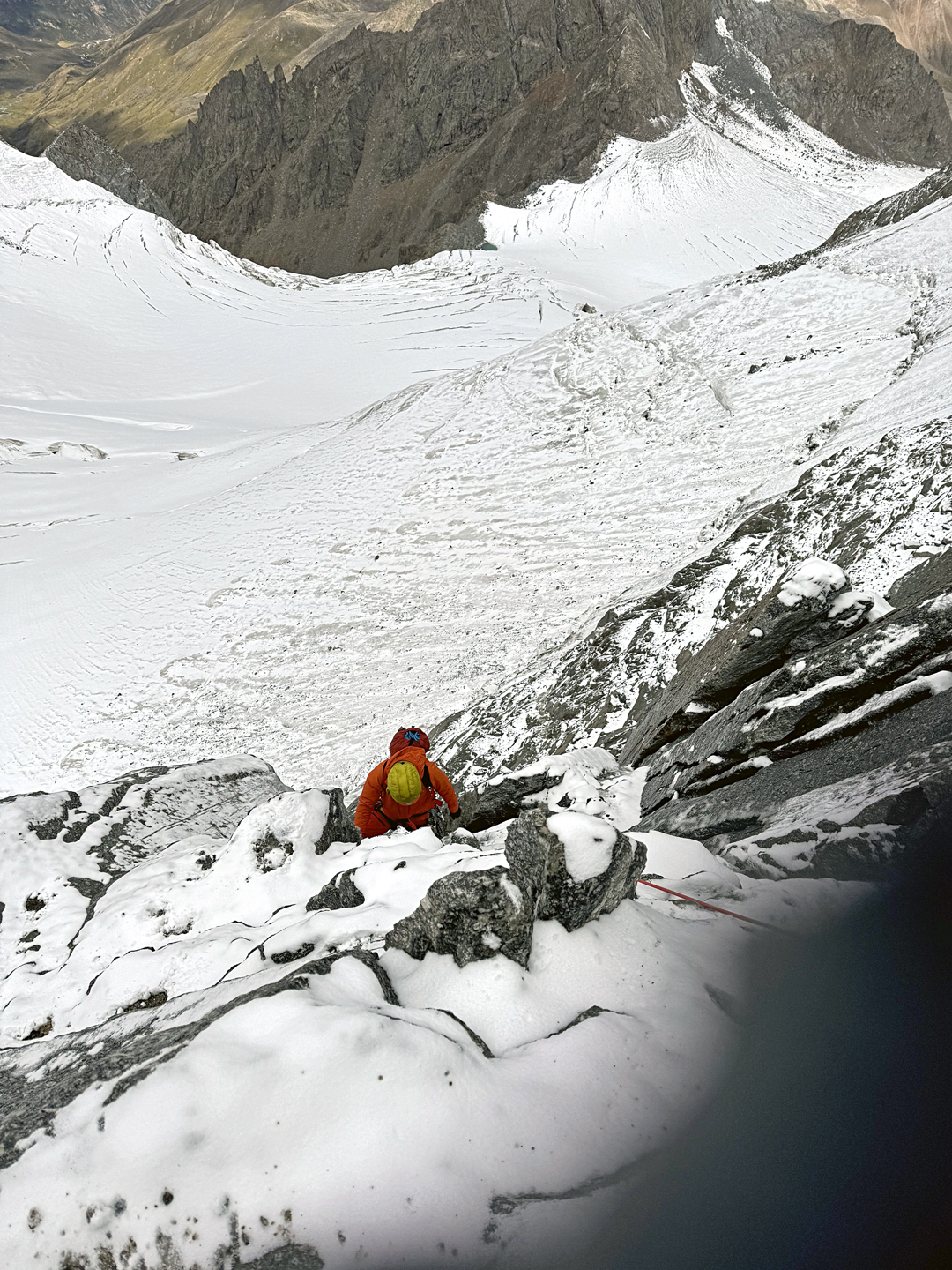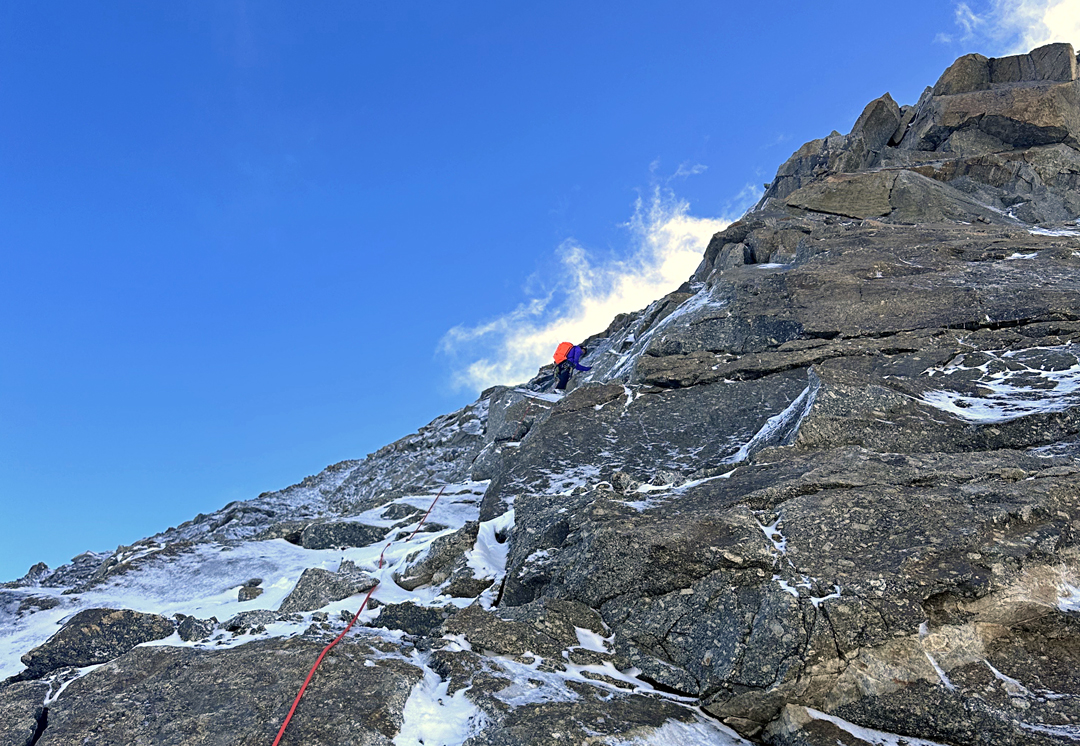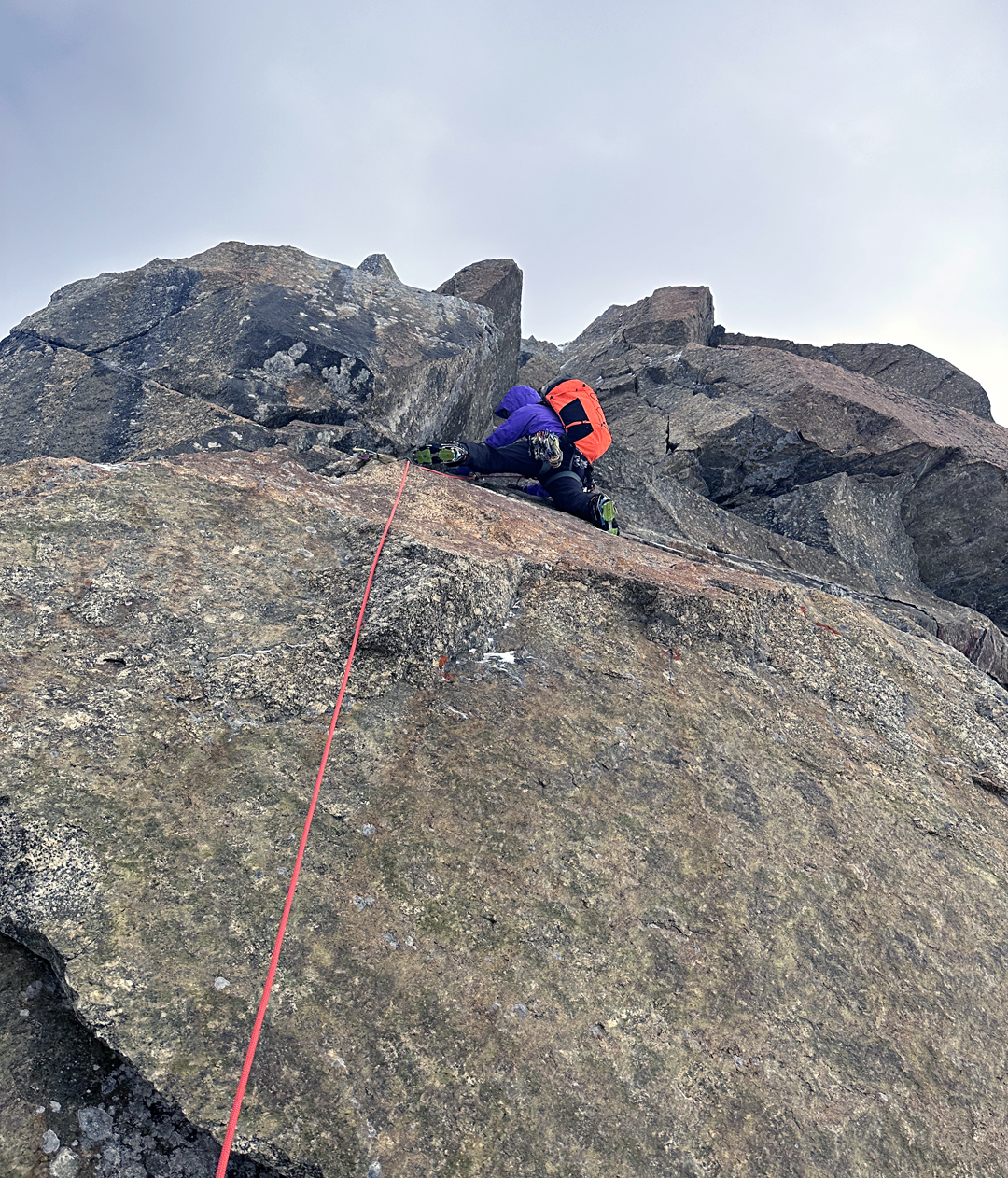Manamcho, Southwest Ridge and Face
China, Tibet, Nyanchen Tanglha East
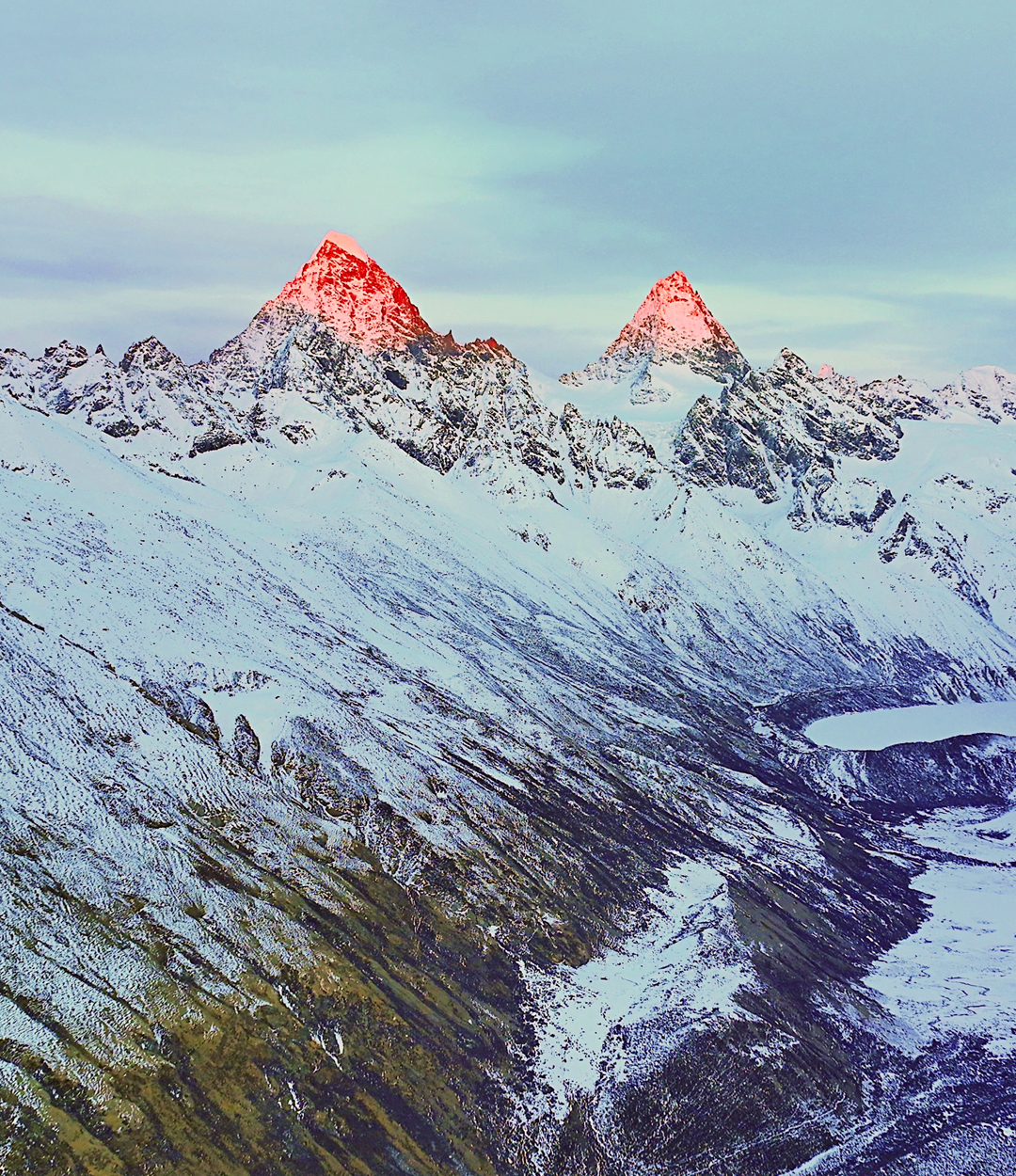
In 2005, Mick Fowler and Chris Watts made the first ascent of Kajaqiao (6,447m), a spectacular peak south of the village of Tatse in the Lhari Valley. Two other members of the same expedition, Phil Amos and Adam Thomas, attempted Manamcho, an unclimbed Matterhorn-like mountain to the southwest (6,264m, 30°29'45.42"N, 93°27'41.10"E). They climbed to 5,880 meters (GPS) on the northwest ridge before bad weather forced a retreat (see AAJ 2006). Fowler felt compelled to return for Manamcho, and in 2007 he and Paul Ramsden made the first ascent via the northwest ridge (AAJ 2008). These peaks then remained unvisited until 2024, when Chinese climbers Liu Junfu and Wang Shuai planned an attempt on Manamcho.
The pair reached Lhasa on September 4, bought supplies, then on the 7th drove to Lhari County. Starting from a small village in the Lhari Valley at 30°37'7.67"N, 93°24'12.48"E, using neither yaks nor porters, they moved south up the Manam Valley to around 5,000 meters, then flew a drone to inspect the glacier leading to the south face of Manamcho. With a forecast of a good weather window, the two ascended to a base camp at 5,600 meters, and while Wang made camp, Liu went to the col at the foot of the southwest ridge to reconnoiter a route.
On the 10th, they got up at 5 a.m. and started their ascent. However, it snowed and the rock became quite slippery. They decided to postpone the attempt, but then the weather miraculously cleared and they continued.
The glacier approach gave sections of AI2, and above the col on the ridge they climbed three pitches, one of which was a tricky verglassed slab. The ridge now became very steep, so the two slanted left onto the face to the left and climbed a few pitches, the second of which was a slabby corner with no protection for ten meters. Rockfall drove them back onto the ridge, with the climbing becoming easier as the snow melted from the rock.
At 6,100 meters they were stopped by a four- or five-meter slab of very compact rock. There appeared to be no way they could either free or aid it, and no possibility to bypass the difficulties. Liu tied a length of rope to one of his ice tools and threw the tool above the slab, hoping to hook a rock. After more than 10 attempts, it stuck and resisted several pull tests. Liu climbed up the rope and emerged at the top of the slab.
After a total of 14 pitches, the two reached the summit and without delay started their descent. They reached base camp at 9 p.m. On the 11th, they descended the glacier to the road, and they arrived in Lhasa that evening. The 700-meter new route was graded M5 AI2.
—Xia Zhongming, Germany


